 Your new post is loading...
 Your new post is loading...

|
Scooped by
Gilbert C FAURE
October 13, 2013 8:40 AM
|
is a personal Notebook Thanks John Dudley for the following tweet "If you like interesting snippets on all sorts of subjects relevant to academia, information, the world, highly recommended is @grip54 's collection:" La curation de contenus, la mémoire partagée d'une veille scientifique et sociétale

|
Scooped by
Gilbert C FAURE
December 13, 8:44 AM
|
When I started my research journey in my master's, I judged journals by their titles.
If it sounded serious and had “International” in the name, I trusted it. 😊
Then Prof. Muhammad Shakil showed me the journal I’d been reading was on a predatory list.
Same topic as top publishers, but zero peer review and fake metrics.
That week I made a simple rule for myself:
if I’m building my understanding or citing in a paper, I start with trusted publishers first.
Here’s a quick guide to some major academic publishers and what they’re good for:
• Elsevier
Strong across sciences, health, social sciences. Many Scopus and Web of Science journals.
• Springer Nature
Big in STEM and medicine; includes Springer, Nature titles, and BioMed Central for open access.
• Wiley
Well known for psychology, business, and social sciences; lots of society journals.
• Taylor & Francis Group
Great for humanities, education, tourism, and management fields.
• Sage
Very strong in social sciences, education, and methods.
• Emerald Publishing
Focused on business, management, hospitality, tourism, and leadership.
• MDPI
Fast, fully open access; only use well-established titles that fit your field and scope.
• Cambridge University Press & Assessment
Highly selective, theory-heavy, and often field-defining journals.
• JSTOR
Archive of high-quality older articles—perfect for background reading and classic work.
Two pro tips for beginners:
1. When in doubt, read from these publishers first instead of random “international” journals.
2. Learn to recognize their logos/symbols; your brain will quickly spot high-trust sources when you scan search results.
Save this post so next time you search the literature, you can quickly filter for trusted publishers and avoid predatory traps.
———————————————————————
Follow me 👉 https://lnkd.in/d4b-t6b3
60k+ follow me here—but only a few read The Hybrid Researcher
Be one of them 👉 https://lnkd.in/dMB8YJgm
Connect on all platforms 👉 https://tr.ee/yEg4hY
| 11 comments on LinkedIn

|
Scooped by
Gilbert C FAURE
December 12, 1:46 PM
|
Ce que la puissance chinoise donne à voir… et ce qu'elle dissimule.
J'évoque souvent ici la force de certains modèles propres à la Chine : efficacité, rapidité, capacité d'exécution, ambition technologique. Mais mettre en avant ce qu'elle fait bien, et qui peut nous inspirer, ne signifie pas ignorer ses angles morts. Et souligner ses fragilités ne revient pas non plus pas à nier ses accomplissements. Les deux coexistent.
La Chine est aujourd’hui une superpuissance industrielle et digitale. Au-delà de cette efficacité spectaculaire, et derrière cette ascension à tout rompre, l'envers du décor n'est pas forcément idyllique.
Il existe des tensions permanentes entre l'audace du pays et ses fragilités, son hyper-modernité et ses rigidités structurelles, son innovation et le contrôle qui encadre la totalité de la société.
Ce modèle s'est construit sous une forte pression politique et organisationnelle. Ces contraintes n'empêchent pas la performance, mais elles laissent apparaître des vulnérabilités qui ne sont pas mentionnées dans les récits officiels.
Qu'est-ce qui vient nuancer le tableau ?
- une crise immobilière longue
- un chômage des jeunes élevé malgré des études poussées
- un endettement massif
- la prudence des investisseurs locaux et étrangers
- la chute des naissances et une solitude croissante
- une augmentation des recherches en ligne liées à l'anxiété et à la dépression, une demande croissante de consultations malgré l’absence de données faute de transparence.
Une partie de l'élite chinoise émigre au Japon, à la recherche de stabilité et de perspectives éducatives pour ses enfants. Les talents désertent. La jeunesse exprime son désenchantement avec un retour à la spiritualité ou à la nature. Dans tous les cas, les valeurs bougent beaucoup en ce moment.
Le secteur privé n'est pas épargné. Beaucoup d’entrepreneurs réussissent, malgré le système plus que grâce à lui. The Economist mentionnait en octobre plusieurs cas de suicides parmi des dirigeants, illustrant la pression actuelle. Et l'ONG Safeguard Defenders a documenté quatre récents suicides d'entrepreneurs, tous auparavant soumis à des enquêtes disciplinaires.
Comme partout, la Chine traverse une mutation. Elle affronte des défis économiques et sociaux qui ressemblent parfois aux nôtres : productivité en berne, arbitrages difficiles entre contrôle et innovation, tensions géopolitiques, nécessité de réformes structurelles.
Je vois que souvent, elle suscite soit la peur, soit la fascination. Pourtant, une pensée complexe, qui intègre des réalités variées mais concomitantes, est la seule façon de percevoir un pays si contrasté.
D'une façon générale, sachons regarder de façon pragmatique, sans se laisser submerger par l'émotionnel. C'est la meilleure façon de lire le monde quand la tendance est à la polarisation sur tout. | 14 comments on LinkedIn

|
Scooped by
Gilbert C FAURE
December 12, 7:42 AM
|
Understanding curiosity can help people—and robots—learn faster

|
Scooped by
Gilbert C FAURE
December 12, 4:20 AM
|
🚀 Se passer des géants de l’IA qui exploitent vos données ? Explorez Euria, Lumo et Le Chat, des assistants IA souverains, sécurisés et sans inscription obligatoire.
#IAéthique #Education

|
Scooped by
Gilbert C FAURE
December 11, 4:08 AM
|
I made a MAP OF TIKTOK.
Y'all kept asking. So here is it is.
We don't know a lot about TikTok's algorithm. Last year, 1,100 people sent us their TikTok data to help try to learn more. (They say they're "transparent" about how it works. You be the judge!)
I used an open-source collaborative filtering algorithm -- a simplified version of what TikTok has signaled that it uses -- to make a map of 121,000 videos on TikTok. Videos watched by similar people end up closer together. So videos on the same topic tend to cluster together, even though my algorithm doesn't know anything about the video content.
Even more astonishingly, the algorithm determined gender was one of the biggest determining factors in the topics you see on your feed. Look at the second map here: it's almost a perfect gradient, with topics seen disproportionately by women on the left (like books and skincare), and those seen disproportionately by men (sports and videogames) on the right.
All of the amazing beautiful design and graphics work by Joe Fox and Leslie S. (you don't want to see the ugly matplotlib version I made alone.)
Read more here: https://wapo.st/44ZzJcl | 25 comments on LinkedIn

|
Scooped by
Gilbert C FAURE
December 11, 4:01 AM
|

|
Scooped by
Gilbert C FAURE
December 10, 7:06 AM
|
📚 Feeling intimidated by scientific papers? You're not alone!
Reading research doesn't require a PhD—just the right roadmap. Whether you're a curious patient, healthcare professional, or lifelong learner, this guide breaks down exactly how to navigate any scientific paper with confidence.
What you'll learn:
✨ How to decode each section (from abstract to conclusion)
✨ Speed reading strategies that actually work
✨ Critical questions to ask about funding & bias
✨ Where to find the most reliable research
✨ Pro tips from experienced researchers
Key takeaway: You don't need to understand every technical detail to get valuable insights from research. Focus on the big picture, skip around, and remember—every expert was once a beginner!
🎯 Save this post to reference next time you want to dig into a study. Your future self will thank you!
💡 Pro tip: Always start with systematic reviews and plain language summaries when available—they're game changers for understanding complex topics.
Have you ever tried reading a scientific paper? What was your biggest challenge? Drop a comment below! 👇
Alex St. John, MSc
References:
1. Oct 14, 2024 Substack - https://lnkd.in/ern7F-fN
2. How to Read a Scientific Paper. Available at: https://lnkd.in/eK4rTZ2t
3. Ragab Elbanna, M.E., 2008. How to read and evaluate a scientific paper?. Ain Shams Journal of Surgery, 1(1), pp.5-9. https://lnkd.in/eUqVhdKV

|
Scooped by
Gilbert C FAURE
December 10, 7:03 AM
|
L’agence Romance signe un (vrai) conte de Noël pour Intermarché 🎄
Une campagne qui se situe bien loin des standards classiques de la publicité TV et on adore..

|
Scooped by
Gilbert C FAURE
December 9, 4:14 AM
|
S'il y a un article scientifique à retenir cette année, c'est bien celui-là ⬇️
C'est une révolution dans l'IA appliquée à l'épidémiologie.
Vous connaissez surement le modèle GPT classique ;
il prédit le prochain mot d’une phrase.
Et bien ce modèle a été adapté aux données de santé longitudinales, avec la création du modèle Delphi‑2M. Il prédit alors le prochain événement de santé dans la vie d’un individu à partir de données de santé massives.
Un événement étant l'apparition d'une nouvelle maladie, d'une hospitalisation, d'un examen de santé ...
💡Chaque dossier médical devient une séquence, un peu comme une phrase.
En pratique, ce modèle est entraîné sur 400 000 individus du UK Biobank et validé sur 1,9 million de dossiers danois :
- il prédit les taux de +1 000 maladies en tenant compte de l’historique individuel,
- il atteint une précision équivalente à celle de modèles spécialisés par maladie,
- il génère des trajectoires de santé futures sur 20 ans, par pas de 5 ans, permettant d’estimer le risque global et d’alimenter des modèles sans utiliser de données réelles,
- il identifie des clusters de comorbidités et leurs interactions temporelles grâce à des approches explicables (SHAP), tout en révélant certains biais d’origine dans les données.
👉🏼 En bref : un modèle capable à la fois de prédire, de simuler et d'expliquer l’évolution des maladies dans des grandes cohortes.
Rien que çà ...
C'est par ici pour lire l'article : 📖"Learning the natural history of human disease with generative transformers" (PMID: 40963019 et sa correction PMID: 41225015).
------
Laurie Fraticelli, PhD, je partage des infos utiles et d'actualité en #sciences de la #santé. 🔔 Clique sur “suivre” pour ne rien rater !

|
Scooped by
Gilbert C FAURE
December 9, 4:02 AM
|
Just sent my views on Ofcom's consultation on media literacy, here are some of the key points I've made:
1. Social media platform are profit driven organisations and have been the main source for online harms. Therefore, expecting them to develop media literacy programmes will not work. Citizens of all ages, and not just children and young adults, should have access to non-commercial orgnisations who can support them on media literacy.
2. As a society, we are beyond the point of hoping that social media companies will adopt recommendations, because these companies have been failing people and democracies for over a decade. Therefore, in order for social media companies to change how they currently operate, we need stricter rules and enforcement.
3. Many of the recommendations offered have been issues that platforms have promised to tackle but haven’t - from the failed Ad Library project and onto transparency, ‘privacy by design’, clearer terms of use or meaningful choices such as the consent mechanism – all have not been respected or applied by these companies, so why repeat recipes that do not work?
4. The current enforcement of big platform is inefficient because financial penalties for companies who earn potential fines within days is not deterring them.
5. Improving media literacy MUST come hand in hand with a better media ecosystem where journalists and trusted organisations have enough resources and trust so that people can use them. This also means that social media platforms must give trusted news sources and organisations prioritisation on their feeds.
6. Ofcom should set-up an independent audit organisation that will consist of academics, journalists, librarians, and other literacy organisations who will have unrestricted access to social media platforms data and execute quarterly audits. The organisation will pay these people through the tax taken from social media platforms.
7. But, this also means that the current business model of social media platforms of surveillance ad-tech needs to change as that is the main cause of most online harms. When the business model is built on spying on people over time and platforms, extracting their data and trading it while increasing engagement and attention - then there is no incentive for meaningful engagement online and we will see more disinformation, conspiracy theories and hate online – because it sells.
https://lnkd.in/eCGrzXGC

|
Scooped by
Gilbert C FAURE
December 9, 3:44 AM
|
À Paris, l'Apur - Atelier parisien d'urbanisme a réalisé une géographie des animaux de compagnie.
Côté chiens, les arrondissements 15e, 16e et 17e forment le cœur canin de la capitale – surtout dans l’Ouest parisien. 77 000 chiens sont « domiciliés » à Paris.
Côté chats, le Nord-Est est leur royaume : Montmartre, mais aussi les 15e et 20e se distinguent. 146 000 chats peuplent Paris, soit +16 % en dix ans.
Source : Apur, 2025 (Fichier National I-CAD / Ingenium animalis).
#Paris #Ville #Data #Urbanisme #AnimauxDeCompagnie #Cartographie #Apur #DesignUrbain

|
Scooped by
Gilbert C FAURE
December 9, 3:33 AM
|
En 3 ans, pour chercher de l'#information, #ChatGPT est devenu le réflexe premier aux dépens de Google, You Tube ou d'une assistant vocal. C'est un vrai bouleversement ! WEDEMAIN
|

|
Scooped by
Gilbert C FAURE
December 14, 5:20 AM
|
Read Endocrinologist: “This Nordic Workout Helps Men Over 50 Burn Fat Naturally – No Gym, No Diets” and discover expert health insights and evidence-based information.

|
Scooped by
Gilbert C FAURE
December 13, 3:00 AM
|
Les médias en ligne face au tsunami du contenu automatisé : la lutte contre les "slops" est lancée !
https://lnkd.in/eJbT9cM3

|
Scooped by
Gilbert C FAURE
December 12, 8:31 AM
|
Three months ago, a PhD student asked me a simple question that revealed a big problem:
“Haroon… why doesn’t ChatGPT give me the same quality answers you get?”
So I asked her to show me her prompts.
She typed:
“Explain this better.”
“Write my literature review.”
“Make this academic.”
And that’s when it clicked:
Most researchers don’t struggle with AI —
They struggle with telling AI exactly what they need.
Your output is only as good as your prompt.
So I created a set of 14 research-ready prompts that work for planning, reviewing, analyzing, and generating ideas—without crossing academic integrity lines.
Here’s what they help you do:
Research Plan
Turn any topic into objectives, a timeline, a budget, and an impact.
Brainstorm Topics
Get 10 meaningful topics with justification + a research question.
Study Review
Summaries of recent studies—methods, findings, gaps.
Question Builder
Convert an idea into 5 research questions + hypotheses.
Research Timeline
Key breakthroughs over the past decade.
Dataset Helper
Useful tests, insights, and visualizations from your dataset.
Find Gaps
Identify gaps from links and propose one experiment per gap.
Method Design
Outline your method, data sources, ethics, and outcomes.
Check Credibility
Evaluate bias, evidence strength, and missing sources.
Trend Insights
Predict emerging trends using real data.
Ethics Review
Privacy, bias, risk areas, regulations.
Abstract Summary
Turn an abstract into visuals + key takeaways.
Hypothesis Ideas
Generate testable, valid hypotheses for your question.
Cross-Topic Links
Connect two topics and propose hybrid ideas.
If you’re using AI for research,
your prompts are the difference between generic output and research-level clarity.
Save this list — it’ll become your daily toolkit.
———————————————————————
Follow me 👉 https://lnkd.in/d4b-t6b3
60k+ follow me here — but only a few read The Hybrid Researcher
Be one of them 👉 https://lnkd.in/dMB8YJgm
Connect on all platforms 👉 https://tr.ee/yEg4hY | 13 comments on LinkedIn

|
Scooped by
Gilbert C FAURE
December 12, 7:18 AM
|
Good information doesn’t happen by accident; it needs intentional behaviour, writes Simon Porter, VP of Research Futures at Digital Science

|
Scooped by
Gilbert C FAURE
December 11, 1:49 PM
|

|
Scooped by
Gilbert C FAURE
December 11, 4:04 AM
|
📱 TikTok : pourquoi les marques doivent (enfin) le veiller sérieusement
TikTok n’est plus seulement la plateforme des tendances. C’est devenu un espace d’influence massive, où se jouent désormais réputation, consommation et crises.
📕 Pour aider les communicants et veilleurs à mieux comprendre cet écosystème, Visibrain publie son tout nouveau guide sur la veille TikTok.
Pourquoi veiller TikTok aujourd'hui ?
- Parce que TikTok façonne l’image des organisations : un challenge viral peut propulser une marque, mais un bad buzz peut aussi y naître ou y transiter
- Parce que c’est une source d’insights : on y observe des usages émergents, des communautés très actives et des créateurs capables de faire bouger les perceptions, un terrain précieux pour anticiper les tendances
- Parce que c'est un réseau qui transforme : TikTok influence désormais les achats, la culture, la politique, les comportements
🔗 Téléchargez le guide complet ici : urlr.me/DFGdUj

|
Scooped by
Gilbert C FAURE
December 11, 3:59 AM
|

|
Scooped by
Gilbert C FAURE
December 10, 7:05 AM
|
C’est une réponse cinglante aux modèles opaques et énergivores de la Silicon Valley et des répliques chinoises. Ce 9 décembre, l’hébergeur suisse infomaniak | The Ethical Cloud a dévoilé #Euria, son propre #assistant d’#intelligenceartificielle. Accessible gratuitement sur mobile et le Web, Euria ne se contente pas de rivaliser avec ChatGPT sur le plan des fonctionnalités : elle introduit un modèle vertueux (inédit) où chaque requête contribue à chauffer des foyers à Genève, tout en garantissant qu’aucune donnée personnelle ne sert à l’entraînement des modèles. Ah oui, c’est open source !
Source : Goodtech ( ex-TOOLINUX)
#Infomaniak | 18 comments on LinkedIn

|
Scooped by
Gilbert C FAURE
December 9, 7:09 AM
|
Steve Smith explains why academic publishers must now become "curators of context" in the compute age

|
Scooped by
Gilbert C FAURE
December 9, 4:09 AM
|
5 Marches pour arrêter de subir sa vie (et pourquoi atteindre vos objectifs ne vous rendra pas heureux)
On pense souvent que le développement personnel, c’est devenir une version "parfaite" de soi-même, accumuler des succès ou imposer sa nouvelle vérité aux autres (attention à l'ego du dév perso !).
Et si la clé n'était pas d'ajouter des choses, mais d'arrêter certains mécanismes toxiques ?
J’ai décortiqué une méthode en 5 étapes qui remet les pendules à l'heure. Voici pourquoi vous devez absolument vous y intéresser :
1️⃣ Arrêtez de chercher un coupable (même si c'est vous) Dès l'école, on nous apprend à demander "Qui a fait ça ?" pour punir. Résultat ? On blâme l'autre pour se dédouaner, ou on se blâme soi-même en s'écrasant sous la morale. Spoiler : dans les deux cas, vous restez une victime et rien ne se résout. La première étape, c'est de remplacer le blâme par l'envie de grandir.
2️⃣ Sortez du Triangle de Karpman Vous connaissez ce jeu infernal : Bourreau, Victime, Sauveur ?. Pour en sortir, il faut passer de la culpabilité à la responsabilité. Au lieu de chercher qui a tort, demandez-vous : "Quelle est la solution ?". C'est la seule façon de réactiver votre créativité et de quitter la position de victime.
3️⃣ Avoir raison ou être heureux ? Il faut choisir. Combien de fois avez-vous gâché une soirée juste pour prouver que vous aviez raison ? Quand on cherche à avoir raison à tout prix, il n'y a qu'un seul perdant : la relation. Cette étape vous apprend à lâcher vos certitudes (qui font de vous des "vieux cons" avant l'âge) pour privilégier l'harmonie.
4️⃣ L'arnaque des objectifs "Quand j'aurai la maison, le chien et la piscine, je serai heureux". Faux.. C'est une image d'Épinal qui mène souvent à la déprime une fois l'objectif atteint, car on se sent vide. Le bonheur ne s'obtient pas, il s'apprend en chemin.
5️⃣ Passez de l'état au fonctionnement Arrêtez de vous coller des étiquettes ("je suis comme ci", "il est pervers narcissique"). Adoptez une approche systémique : comprenez comment vous fonctionnez pour modifier ce qui ne vous convient pas. Et surtout, acceptez de vous faire guider par des mentors pour gagner du temps, comme on apprend à faire du vélo.
🚀 Envie de grandir plutôt que de juger ? Ces 5 étapes ne sont pas là pour vous donner des leçons, mais pour vous aider à comprendre votre propre système.
👉 https://lnkd.in/evNHxGHz

|
Scooped by
Gilbert C FAURE
December 9, 3:58 AM
|
AUDIO • Diderot, audacieux au sein des Lumières, épisode 3/4 : L'Encyclopédie : la véritable œuvre de Diderot ?. Une série inédite proposée par France Culture. Écoutez Avec philosophie, et découvrez nos podcasts en ligne.

|
Scooped by
Gilbert C FAURE
December 9, 3:41 AM
|
Don't copy and paste answers from ChatGPT. 🤯
ChatGPT writing is easily detectable.
Here are 10 tools to humanize AI-generated text:
1. Jettelly Humanize
https://bot.jettelly .com/humanize/
– Rewrites AI content with natural flow.
2. Hemingway App
http://hemingwayapp .com
– Simplifies complex sentences for conversational tone.
3. QuillBot
https://quillbot .com/
– Paraphrases content for readability.
4. Grammarly
https://www.grammarly .com/
– Adjusts tone for natural language.
5. ProWritingAid
https://prowritingaid .com/
– Fixes repetitive or formal phrases.
6. Slick Write https://slickwrite .com/
– Simplifies formal language.
7. Originality. ai https://www.originality .ai/
– AI detector with content refinement tips.
8. GPTZero https://gptzero .me/
– Helps personalize AI-generated text.
9. Readable https://readable .com/
– Enhances readability and flow.
10. Wordtune https://www.wordtune .com/
– Offers casual, varied rewrites.
These tools help make AI-generated text sound more authentic.
-----
To humanize AI-generated text effectively (without relying on ChatGPT-like patterns),
follow these steps using tools like https://lnkd.in/gjAhMbBc or similar platforms:
1. Rewrite with Nuance
AI detectors flag overly polished language. Use the tool to:
- Break long sentences into shorter, conversational ones.
- Add colloquial phrases (e.g., "kind of," "you know").
- Vary sentence structure to mimic natural human flow.
2. Inject Personality
AI lacks a distinct "voice." After processing the text:
- Add anecdotes or opinions: "In my experience…"
- Use humor or sarcasm where appropriate.
- Include minor grammatical quirks (e.g., starting sentences with "And" or "But")
3. Edit Manually
Tools aren’t perfect. Always refine the output:
- Read aloud to check rhythm.
- Replace jargon with simpler terms.
- Introduce typos sparingly (e.g., "teh" instead of "the").
4. Verify Authenticity
Test your humanized text with AI detectors like Originality.ai or GPTZero. Aim for a "likely human" score.
Example:
Original AI Output:
"Climate change poses significant risks to global ecosystems, necessitating immediate mitigation strategies."
Humanized:
"Let’s be real—climate change is messing with our planet big time. We can’t wait around; we’ve gotta act now before things get worse."
-----------------
🎁 FREE RESOURCES TO LEVEL UP '
Download Top Infographics Cheatsheet: https://lnkd.in/gNBgQkAb
100 ChatGPT Hacks Cheatsheet (𝐅𝐑𝐄𝐄 𝐏𝐃𝐅) :
👉🏻https://lnkd.in/gaFbjKeZ
--------------- | 24 comments on LinkedIn

|
Scooped by
Gilbert C FAURE
December 8, 4:31 AM
|
Excellent….le vrai rôle d’un professeur ! Évaluer en intégrant toutes les techniques pour apprendre …de la bonne vieille fiche mémorisée…à l’usage de l’IA …! 👏👏👏
|






 Your new post is loading...
Your new post is loading...
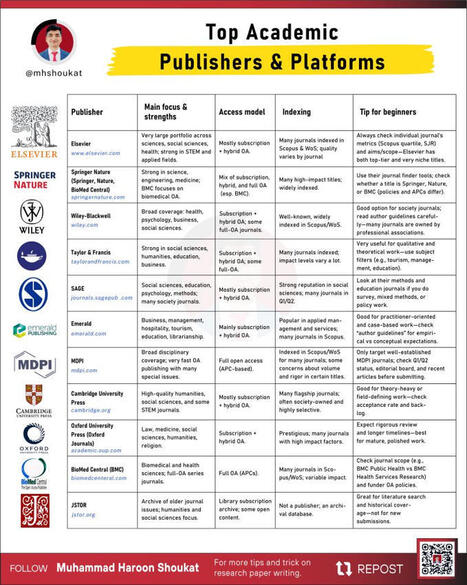
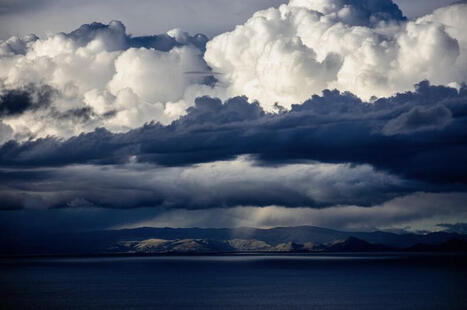
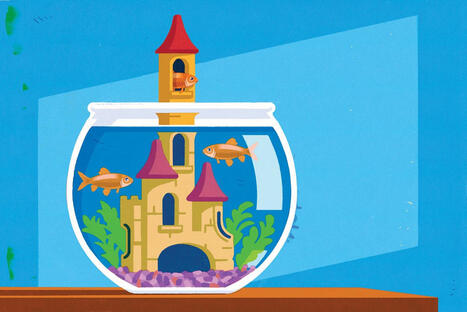
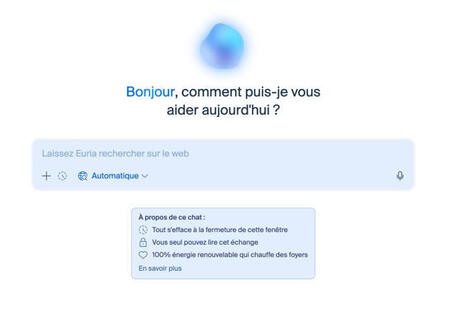
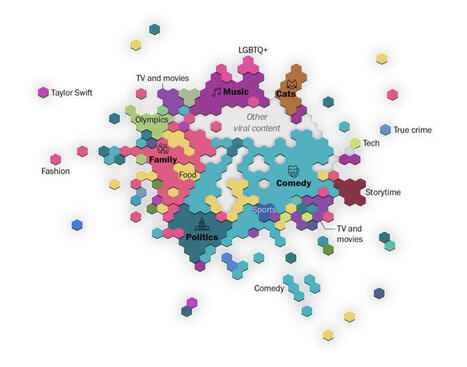
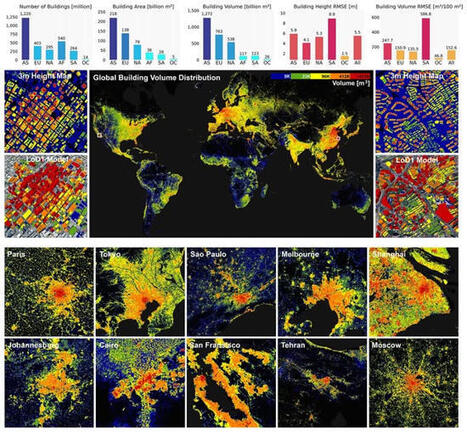
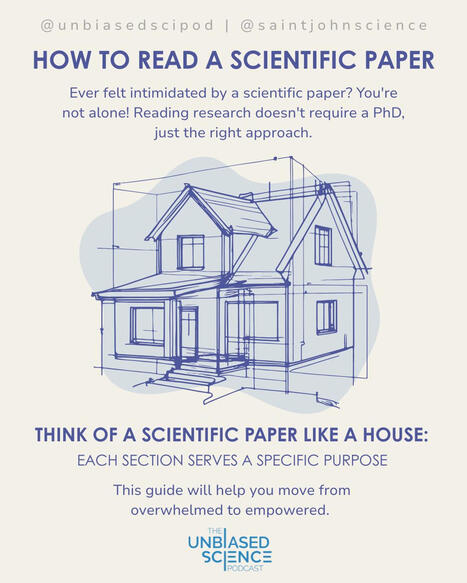

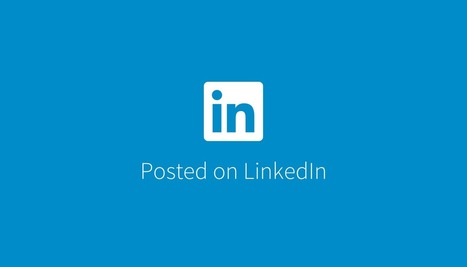

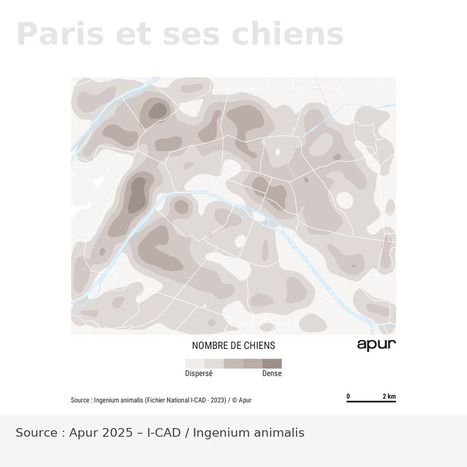



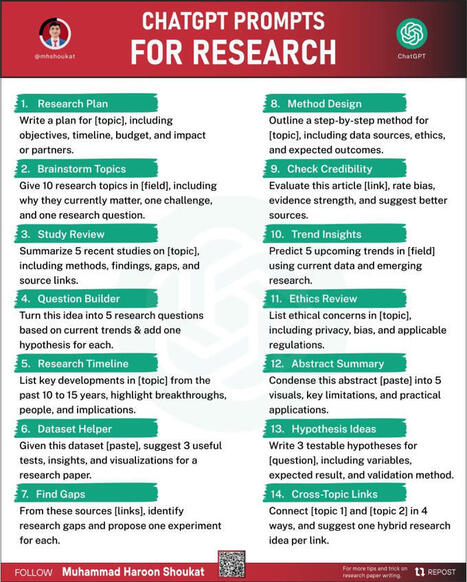



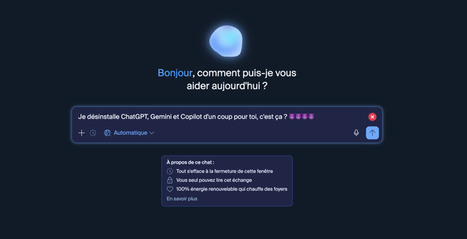
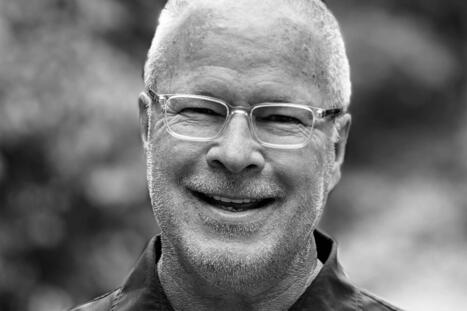
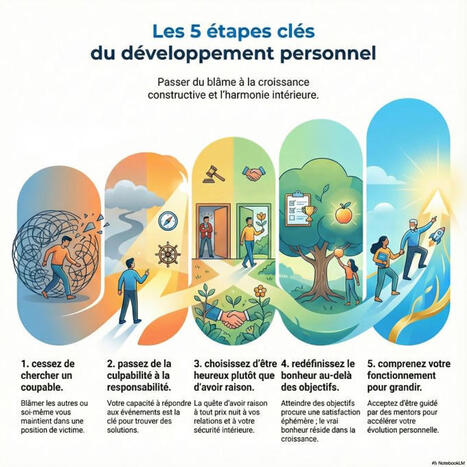

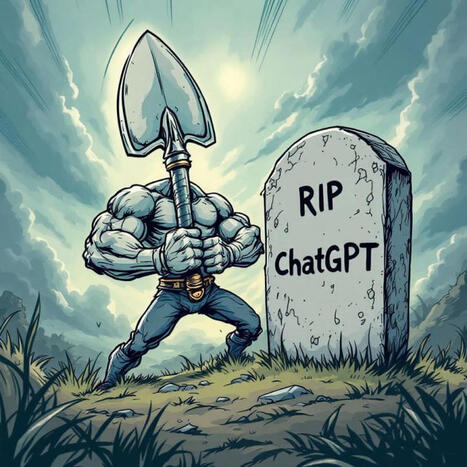
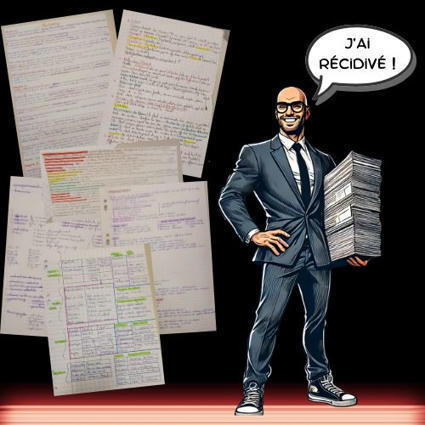





le DPC commence dans les CHUs français par l'encadrement